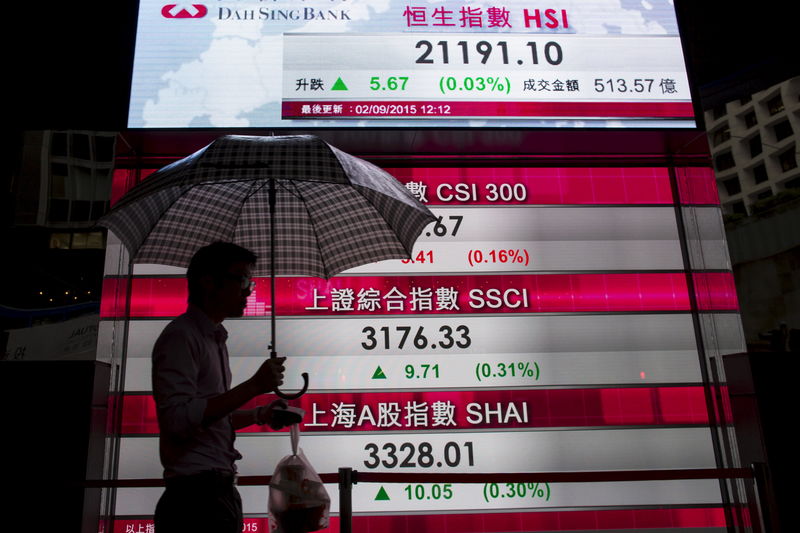An unnamed Chinese official familiar told Bloomberg that while the U.S. and China are open and willing to continue talks after an initial phase, the two sides recognize that it will not be easy to agree on a full trade deal, because Beijing is reluctant to work on the deep structural reforms that the U.S. is pushing for.
China’s Shanghai Composite and the Shenzhen Component climbed 0.8% and 0.9% respectively by 10:40 PM ET (02:40 GMT).
On the data front, the Caixin/Markit manufacturing Purchasing Managers’ Index (PMI) came in at 51.7 for the month of October, compared with the expectation of 51.0.
Hong Kong’s Hang Seng Index gained 0.6%.
Japan’s Nikkei 225 fell 0.4%. The Jibun Bank Final Japan Manufacturing Purchasing Managers' Index (PMI) dropped to 48.4 on a seasonally adjusted basis, hitting the lowest level since June 2016.
South Korea’s KOSPI 50 gained 0.4% even after trade ministry data showed the country’s exports in October fell 14.7% from a year earlier. It was the biggest drop in nearly four years on-year. Analysts previously expected the figure to drop 13.8% YoY.
draft
Investing.com - Asian markets traded mostly higher on Friday morning as U.S. President Donald Trump said in a tweet overnight that Beijing and Washington is searching for a new venue for him and Chinese President Xi Jinping to sign a phase one trade deal.
“China and the USA are working on selecting a new site for signing of Phase One of Trade Agreement, about 60% of total deal, after APEC in Chile was cancelled duo to unrelated circumstances. The new location will be announced soon. President Xi and President Trump will do signing!” the president tweeted.
However, a Bloomberg report suggested China may well resist signing a comprehensive trade deal, in part because its leaders don't trust Trumps' impulsive nature.
